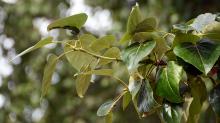-
Broadleaf, deciduous, rapidly growing tree 80 to 130 ft (25-40 m) tall with a straight trunk. Bark is reddish gray, furrowed. Leaves alternate, simple, the usually rounded petiole is 1.5-5 cm long and the blade 2.5-6 cm long and 3-5 cm wide, it is narrowly ovate to ovate, the base is rounded, wedge-shaped or subcordate and the apex obtuse or acute. The upper surface is dark green and the margin finely serrate (many small rounded teeth), undersurface is light gray and may have reddish-orange resin stains. Flowers are in long-stalked catkins, female catkins 10-12 cm long and male 7-10 cm long. Cottony seeds in egg-shaped capsules in 15 cm long catkins. This species is similar in appearance to Black Cottonwood, Populus trichocarpa.
-
Sun, can withstand soil inundation, often found in bottomlands
-
Hardy to USDA Zone 1 It range extends across North America along the northern limit of trees; from northwest Alaska south to British Columbia, east and south to Saskatchewan and to the Dakotas, Michigan, southern Ontario, New York, and Maine. It is local in several western mountains (Oregon, Idaho, and Colorado) and the Black Hills of South Dakota and Wyoming.
-
balsamifera: apparently refers to the ointment native peoples made from the sticky, fragrant resin on the buds and twigs






